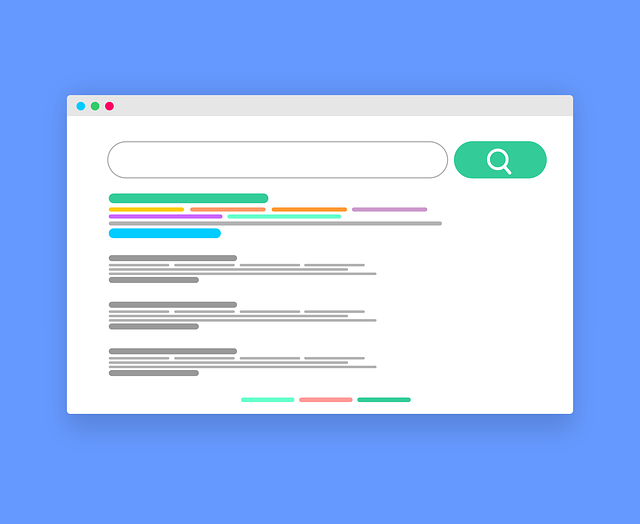Google HowTo Schema is a JSON-LD tool that helps search engines understand and display how-to content as rich snippets. By strategically marking up steps, images, supplies, methods, and expected results, you boost online visibility, user engagement, and click-through rates, turning your tutorials into valuable resources in SERPs and featured snippets.
Google’s HowTo schema markup revolutionizes how search engines display instructional content, enhancing user experience with rich snippets featuring images and step-by-step context. This article guides you through the process of implementing HowTo schema for optimized search visibility. We’ll explore choosing relevant properties, structuring clear instructions, effectively incorporating images, adding contextual details, and more, ensuring your content stands out in today’s competitive digital landscape.
- Understanding Google HowTo Schema Markup
- Choosing Relevant Properties for Marking Up
- Structuring Your Step-by-Step Instructions
- Incorporating Images Effectively with HowTo
- Adding Contextual Information for Rich Results
- Optimizing for Better Search Visibility
Understanding Google HowTo Schema Markup

Google HowTo Schema Markup is a powerful tool for content creators aiming to boost their online visibility and engage users with interactive search results. It’s a type of structured data that helps search engines, particularly Google, understand the step-by-step nature of your content. By marking up tutorials or instructions using this schema, you can enhance your website’s chances of appearing as a rich result in search, providing users with an attractive visual preview of what to expect before clicking through.
This markup uses JSON-LD (JSON for Linked Data) to describe the various steps and components of a tutorial. It includes information like the required tools, ingredients (for recipes), or specific actions needed at each stage. When successfully implemented, it allows Google to display structured snippets in search results, featuring images, step numbers, and concise descriptions. This visual representation not only attracts users but also provides context, ensuring that potential readers quickly grasp the value of your content.
Choosing Relevant Properties for Marking Up

When markup step-by-step content with Google HowTo Schema, selecting the appropriate properties is key to enhancing search result display. Start by identifying the most relevant sections within your content that convey specific actions and instructions. Properties like `name`, `description`, and `step` are essential for defining each stage of the process clearly and concisely. Additionally, incorporating `image` tags allows you to include visual aids that not only enrich the user experience but also can improve click-through rates in search results.
For optimal SEO tagging with HowTo JSON-LD, ensure you also mark up `supply`, `method`, and `expectedResult` where applicable. These properties provide context and detail about the instructional content, making it easier for search engines to understand and display rich results for your how-to guide. This attention to detail can help attract more users and boost visibility by showcasing your content as a helpful, comprehensive resource on both search engine result pages (SERPs) and in featured snippets.
Structuring Your Step-by-Step Instructions

When structuring your step-by-step instructions for optimal display in search results, it’s crucial to adhere to the Google HowTo Schema guidelines. Organize your content logically, ensuring each step is clear and concise. Start with identifying the main topic and breaking it down into sequential stages. Each step should build upon the previous one, leading the reader through a structured learning journey.
Use descriptive language for each action, incorporating relevant keywords naturally. Include specific details to enhance context and understanding. For instance, instead of simply stating “add ingredients,” specify “in a large mixing bowl, combine 2 cups of flour, 1 cup of sugar, and 3 eggs.” This level of detail is crucial for both search engines and human readers to grasp the instructional context fully.
Incorporating Images Effectively with HowTo

Incorporating images is a powerful way to enhance the visual appeal and effectiveness of your HowTo schema markup. When crafting step-by-step guides, including relevant images can significantly improve user experience and engagement. Google’s HowTo Schema allows you to provide contextual information alongside each step, ensuring search engines understand the instructional nature of your content. By strategically placing images at critical points within the schema, you can create a more engaging and interactive rich result for users searching for tutorials on platforms like Google.
For instance, including an image demonstrating a key step or showcasing the final outcome can serve as a valuable visual aid for readers. When properly integrated with the schema, these images become not just decorative but essential components of your guide, helping to convey instructions more effectively. This visual enhancement goes beyond aesthetics; it complements the textual content, making complex procedures more accessible and user-friendly, thereby potentially increasing click-through rates and improving your website’s visibility in search results.
Adding Contextual Information for Rich Results

Adding Contextual Information for Rich Results is a crucial step when using the Google HowTo Schema to markup your content. This involves providing more than just step-by-step instructions; it’s about weaving in descriptive details that enrich the user experience and signal search engines on what to expect. Think of it as giving each step a narrative context, ensuring that both humans and algorithms understand the purpose and outcome.
By incorporating relevant keywords, tool names, materials required, and even safety precautions within your HowTo JSON-LD markup, you’re enhancing the search engine’s ability to interpret and display your content effectively. This not only improves the visibility of your tutorial in search results but also encourages users to click through, given the richer, more informative snippet previews that include images and structured data extracted from your schema implementation. It’s akin to transforming a simple list of directions into an immersive guidebook, making your how-to content stand out in a crowded digital landscape.
Optimizing for Better Search Visibility

When structuring step-by-step content for online platforms, leveraging the Google HowTo Schema is a powerful strategy to enhance search visibility. This schema allows you to provide clear and structured information about tasks or processes, making your content more appealing to search engines like Google. By marking up your instructions with relevant HowTo data, you enable search engines to better understand the context and intent of your content, resulting in improved indexing and ranking.
The use of Rich Results for HowTo, often triggered by Tutorial Schema Markup, can significantly boost the visibility of your instructional content. Search engines may display your steps as an enhanced result with a summary, image, and even video snippets, making it more likely that users will click through to your tutorial from the search results page. Effective SEO tagging, including the strategic placement of HowTo-related tags, ensures that your content reaches its target audience, be it folks seeking solutions or folks who simply love learning new skills.
